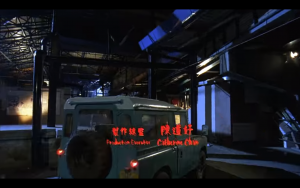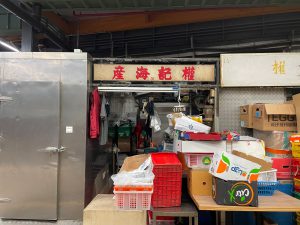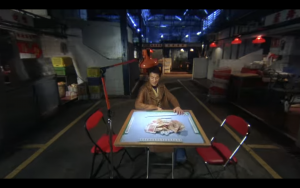FAT CHOI SPIRIT, Johnnie To & Wai Ka-fai 2002
Haiphong Road Temporary Market, Tsim Sha Tsui, Hong Kong


Fat Choi Spirit is a comedy film released for the Chinese New Year. It serves as a humorous production for the celebration for Chinese New Year. It is one of the most successful and popular Mahjong film in the genre which is almost replayed every year on television during Chinese New Year, becoming the habit for a lot of Hong Kong people. The story revolves around the “Mahjong Warrior” or the “Mahjong Master” starred by Andy Lau. The film explores the theme of luck, destiny, love and marriage. Although being a comedy film, it has the deep inspirational meaning applicable to the people in 2002 and also now. The film is set purely in Hong Kong and has scene is many grassroot area for instance many public housing estates and also the Haiphong Road Temporary Market I have selected.


The market is the starting scene of the film where the Mahjong Master comes to get justice for his friend for being cheated in Mahjong. This scene is important to set the characters of the good and bad. The evilness is implied by the dark after-hour market. The place is only lit by lamps and a few light pipes. In the movie we can clearly see the metal structure of the roof as this was a “temporary market” and it sort of looks as a warehouse. Today the metal structure still exists but mostly hidden by the newly added air-con ducts and lightings. The market has become more permanent than “temporary” which funny enough it has been “temporary” since 1978.




Other than the structure, the market and shops themselves remain largely similar, the stalls are still have the handwritten/ Chinese calligraphy shop signs, slippery floor and messy environment. It is the wet market that we love and hate. The main difference to my guess is the bright lighting now and better air ventilation.


The market when I visited was very quiet, only one entrance is open for temperature checks and there does not seem to be a lot of business going on. It was only 5pm and most stalls were closed. But it also gives the same feeling in the movie, where the market is emptied and who knows what is happening inside it. I did not see anyone play Mahjong there.


For me the scene successful depicts the market as a “dangerous place”, where is gang of mahjong player robs common and naïve housewives. It also presents the human condition of the time where public space more utilized by the public where people gather and do all sort of things, for example, playing mahjong. Perhaps with stricter regulations and people complaining about the noise and nuances, today there is much less of these spontaneous activity seen in the public spaces like markets and estates.
CHAN WILSON, 3035821685
Appreciate the meticulously composed fieldwork photos for the visual comparison accompanied with detailed observations. You have also noted the movie of your choice is a mahjong film released specifically for the Chinese New Year, both of which are distinctive genres of Hong Kong cinema – perhaps meant to a boost of positivity as part of the festivities. However, “the deep inspirational meaning” of the movie seemed to be left unexplained in your report. It would also be great if you can elaborate a bit more on how a “dangerous place” is depicted in the movie and “the human condition of the time”. You may wish to borrow Abbas’ idea of “unfamiliar in the familiar” from L2 to discuss about how the movie resonates with audiences through markets and mahjong albeit the two don’t necessarily go together at all times.